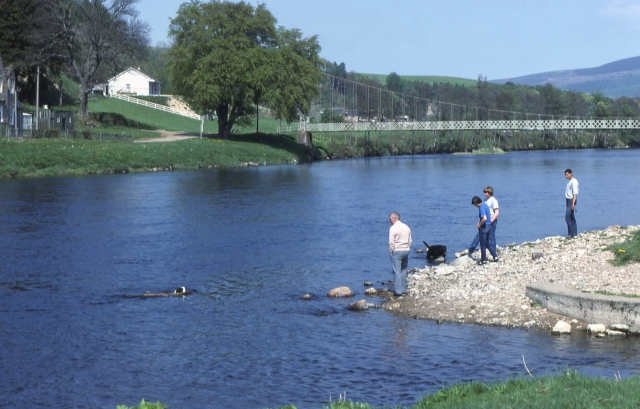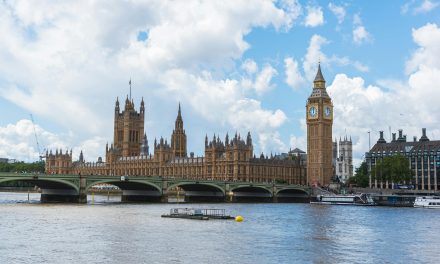The River Spey, located in northeast Scotland, is renowned as one of the country’s most picturesque waterways and a favorite destination for kayaking enthusiasts. Spanning approximately 170 kilometers, it flows through breathtaking landscapes, including lush forests, rolling hills, and charming villages, making it a perfect choice for both beginners and experienced paddlers.
What sets River Spey apart is its unique blend of tranquil stretches and exhilarating rapids, providing an adventure for paddlers of all skill levels. As one of Scotland’s fastest-flowing rivers, it offers an exciting challenge while remaining accessible for leisurely trips. The river’s historical significance, rich wildlife, and the Speyside whisky trail further enhance its appeal, offering a truly immersive outdoor experience.
Whether you are seeking a relaxing paddle through calm waters or a thrilling journey through its rapids, the River Spey guarantees an unforgettable kayaking adventure.
The Beauty of River Spey and Its Kayaking Appeal
The River Spey is celebrated for its stunning natural beauty and its status as a premier destination for outdoor enthusiasts. Winding through the heart of Scotland, the river showcases a wide array of breathtaking landscapes. From the towering Cairngorm Mountains at its source to the Moray Firth where it meets the North Sea, the river offers a constantly changing panorama of scenic wonders.
Paddlers on the River Spey are treated to tranquil waters bordered by lush woodlands and farmlands. Along the journey, kayakers often encounter vibrant wildlife, including otters, herons, and even salmon leaping upstream. The river’s significance also extends to cultural history, with traditional distilleries and quaint villages dotting its banks, making every trip an enriching experience beyond the waters.
The combination of natural and cultural richness makes the River Spey an irresistible choice for kayaking, blending adventure with serenity.
Key Features of River Spey for Kayaking
Several features make the River Spey uniquely suited for kayaking:
- Diverse Water Conditions: With its mix of calm stretches and moderate rapids, the river caters to all skill levels. Beginners can enjoy slower sections, while advanced paddlers can tackle exciting whitewater.
- Accessible Launch Points: Numerous launch points, such as Loch Insh and Aviemore, make planning your trip convenient.
- Wildlife Encounters: The river is home to a variety of species, offering kayakers the chance to connect with nature.
- Historical Attractions: The nearby Speyside whisky distilleries and local landmarks provide opportunities for exploration off the water.
Whether you’re kayaking for leisure or adventure, the River Spey’s distinct features create a truly memorable experience.
Best Times to Kayak on River Spey
Choosing the right time to kayak on the River Spey can significantly enhance your experience. Scotland’s weather and seasonal variations play a crucial role in determining the river’s flow and overall conditions. While the river is accessible year-round, the best times to paddle are during the spring, summer, and early autumn months, when the weather is more favorable, and the scenery is at its peak.
In spring, melting snow from the Cairngorms increases the water flow, providing thrilling rapids for adventure seekers. Summer, on the other hand, offers calmer waters and warm weather, making it ideal for beginners and those looking for a more relaxed kayaking experience. Autumn adds a golden hue to the surrounding landscapes, making it one of the most picturesque times to explore the river.
Kayakers should keep an eye on the weather forecast and river conditions, as rainfall can influence water levels, especially during winter. Overall, planning your trip between April and October ensures the most enjoyable experience.
Seasonal Insights for Kayaking Adventures
Each season offers unique benefits and challenges for kayaking on the River Spey:
- Spring (March to May): High water levels create exciting rapids. Ideal for experienced kayakers seeking adventure.
- Summer (June to August): Warmer weather and longer daylight hours make this season perfect for families and beginners.
- Autumn (September to October): Stunning autumn foliage enhances the beauty of the journey, and the water flow remains manageable.
- Winter (November to February): Less crowded but colder and potentially riskier due to unpredictable water levels. Suitable for experts.
Understanding the seasonal dynamics of the River Spey helps paddlers prepare appropriately and make the most of their adventure.
Essential Gear for River Spey Kayaking
Having the right gear is essential for a safe and enjoyable kayaking experience on the River Spey. The river’s diverse conditions, from calm waters to moderate rapids, require proper preparation to ensure both comfort and safety. Whether you are a beginner or an experienced paddler, investing in high-quality equipment tailored to the river’s specific challenges is key.
Your gear should include basic necessities such as a durable kayak, a paddle, and a personal flotation device (PFD). Additionally, wearing appropriate clothing, such as a wetsuit or drysuit, is crucial for dealing with Scotland’s often unpredictable weather. A dry bag is also essential for protecting your belongings, especially if you plan to carry valuables like phones or cameras.
For those tackling the river’s faster-flowing sections, helmets and spray skirts are highly recommended. Finally, don’t forget to pack a first-aid kit and a waterproof map of the river for added safety. Being well-equipped will allow you to fully enjoy your kayaking journey on the River Spey.
Must-Have Equipment for a Safe Journey
Here’s a detailed list of essential kayaking gear for the River Spey:
- Kayak: Choose a robust and stable kayak suitable for the river’s varying conditions.
- Paddle: Lightweight paddles with adjustable lengths are ideal for prolonged trips.
- Personal Flotation Device (PFD): A life jacket designed specifically for paddlers is mandatory.
- Wetsuit or Drysuit: Protects against cold water temperatures and sudden weather changes.
- Spray Skirt: Keeps water out of the kayak, especially in rapids or choppy sections.
- Helmet: Essential for safety when navigating faster-flowing areas or rapids.
- Dry Bag: Stores valuables and keeps them protected from water exposure.
- First-Aid Kit: An emergency essential for handling minor injuries or situations.
- Waterproof Map: Ensures you stay on track and identify key landmarks along the route.
Carrying these items will help ensure a smooth, safe, and enjoyable experience on the River Spey.
Top Kayaking Routes on River Spey
The River Spey offers a range of kayaking routes that cater to all levels of paddlers, from beginners to advanced adventurers. Each section of the river provides a unique experience, featuring a mix of calm stretches, scenic views, and thrilling rapids. These routes also offer glimpses of Scotland’s rich natural and cultural heritage, making them popular among locals and visitors alike.
One of the most famous routes begins at Loch Insh, a serene starting point that allows paddlers to ease into their journey. From there, the river takes you through Aviemore, known for its stunning landscapes and vibrant wildlife. Intermediate kayakers often favor the stretch from Grantown-on-Spey to Aberlour, which includes gentle rapids and beautiful riverbanks. For a more challenging experience, the section between Knockando and Fochabers is ideal, offering exciting rapids and a faster current.
Whether you’re looking for a leisurely paddle or an adrenaline-filled adventure, the River Spey has a route for everyone.
Popular Sections and Trails for Paddlers
Here’s a breakdown of the most popular kayaking routes on the River Spey:
- Loch Insh to Aviemore: Perfect for beginners, this route features calm waters and stunning views of the Cairngorms.
- Aviemore to Grantown-on-Spey: A moderate stretch with mild rapids and picturesque scenery, ideal for intermediate paddlers.
- Grantown-on-Spey to Aberlour: A longer route with a mix of calm sections and light rapids, showcasing charming villages and wildlife.
- Knockando to Fochabers: Best suited for experienced kayakers, this section offers thrilling rapids and a faster flow.
- Fochabers to the Moray Firth: The final stretch leading to the North Sea, providing a scenic and rewarding end to your journey.
Each of these routes highlights a different aspect of the River Spey, allowing kayakers to choose an experience that matches their skill level and interests.
Tips for Beginners Kayaking on River Spey
For beginners, kayaking on the River Spey can be an exciting yet challenging experience. To ensure a safe and enjoyable journey, it’s essential to prepare properly and understand the river’s dynamics. Starting on the calmer sections of the river, such as Loch Insh or Aviemore, is highly recommended for new paddlers. These areas allow beginners to build confidence and develop basic skills before attempting more challenging stretches.
Enlisting the help of a local kayaking guide or joining a group tour can also make a significant difference. Guides are familiar with the river’s flow, hazards, and best routes, ensuring a safer experience for first-timers. Additionally, learning the basics of river kayaking, such as how to paddle efficiently and perform self-rescue, will give beginners the confidence they need on the water.
By starting small, preparing thoroughly, and practicing regularly, beginners can enjoy all the beauty and excitement the River Spey has to offer.
Advice for a Smooth and Enjoyable Experience
Here are some practical tips for beginners kayaking on the River Spey:
- Start with Calm Sections: Begin your journey on gentle stretches like Loch Insh or Aviemore to practice and build confidence.
- Take a Kayaking Lesson: Enroll in a beginner-friendly kayaking course to learn essential techniques and safety protocols.
- Join a Guided Tour: Experienced guides can help you navigate the river safely and provide insights into its history and wildlife.
- Check Weather and River Conditions: Monitor forecasts to avoid high winds, heavy rains, or unfavorable water levels.
- Dress Appropriately: Wear a wetsuit or drysuit to protect yourself from cold water and sudden weather changes.
- Carry Safety Gear: Always have a personal flotation device (PFD), a first-aid kit, and a whistle for emergencies.
- Take Breaks: Plan stops along the route to rest, refuel, and enjoy the surrounding scenery.
By following these tips, beginners can set themselves up for a successful and memorable kayaking adventure on the River Spey.
Conclusion: Why River Spey is a Must for Kayaking Enthusiasts
The River Spey stands out as one of Scotland’s most remarkable kayaking destinations, offering an unmatched combination of natural beauty, thrilling waters, and rich cultural heritage. Its diverse sections cater to paddlers of all levels, from serene stretches for beginners to exciting rapids for seasoned adventurers. Whether you’re seeking a peaceful connection with nature or an adrenaline-filled challenge, the River Spey delivers on all fronts.
In addition to its kayaking appeal, the surrounding areas enrich the experience with vibrant wildlife, historical landmarks, and the famed Speyside whisky trail. These elements make every journey along the river not just an adventure on the water, but also an exploration of Scotland’s culture and landscapes.
Kayaking on the River Spey is more than just a recreational activity—it’s an opportunity to create lasting memories amidst one of the country’s most iconic natural settings. For paddlers looking for their next great adventure, the River Spey is truly a must-visit destination.




